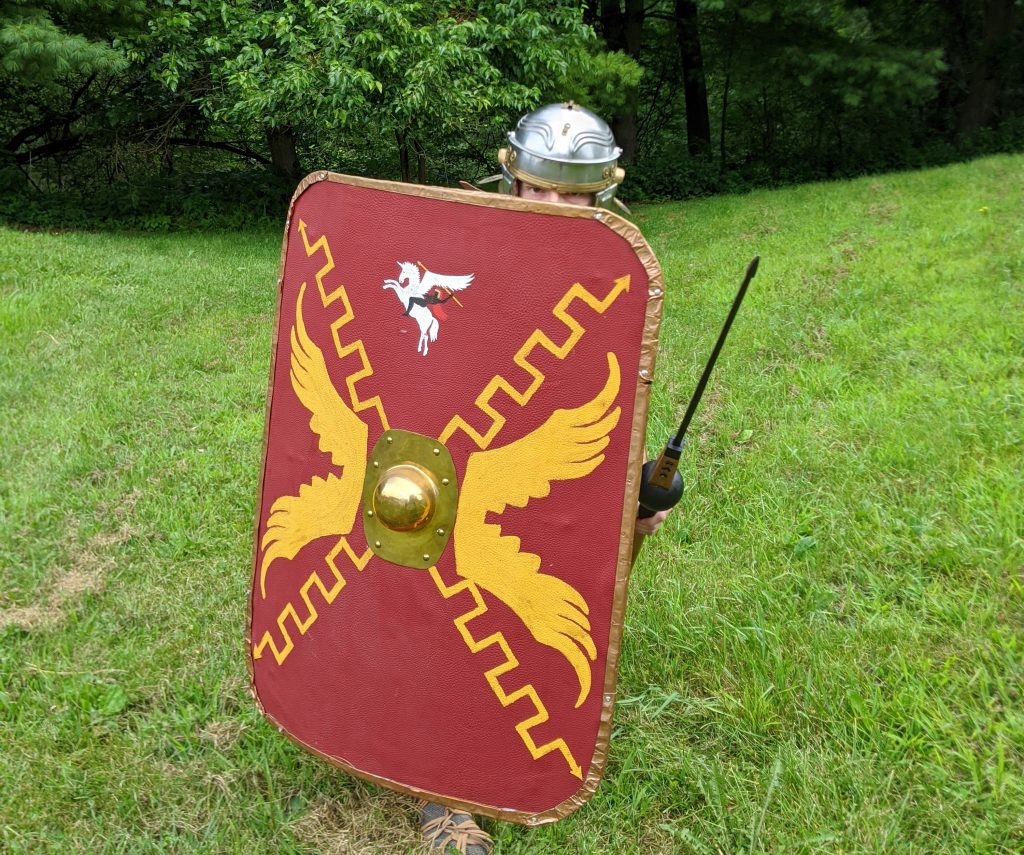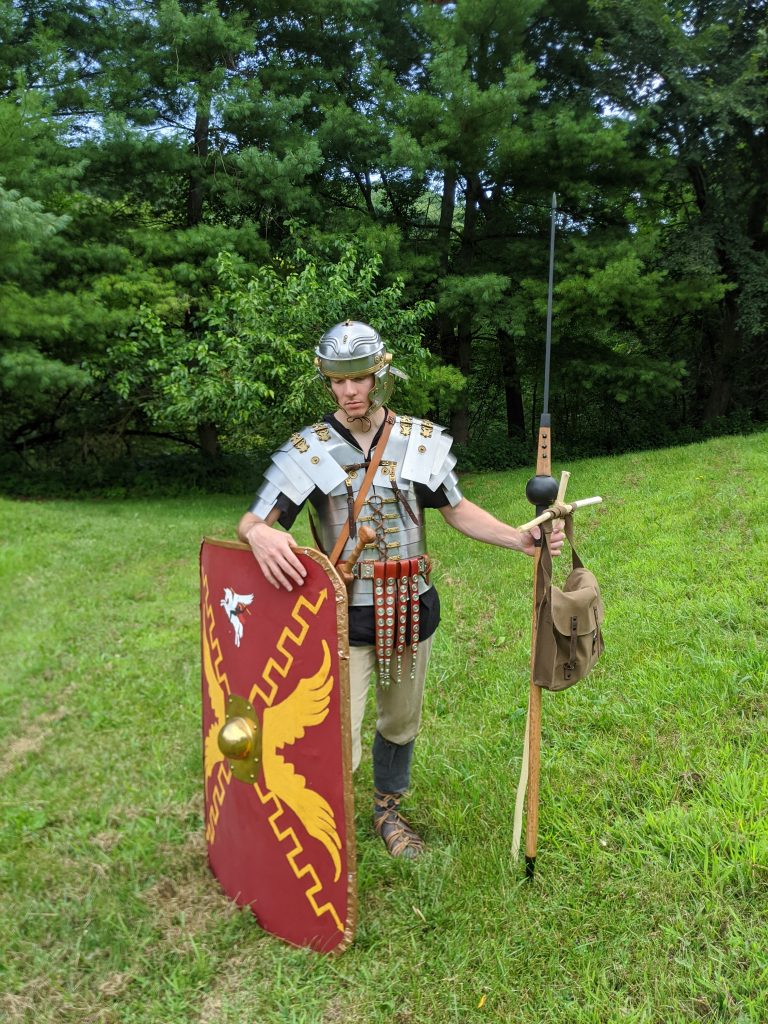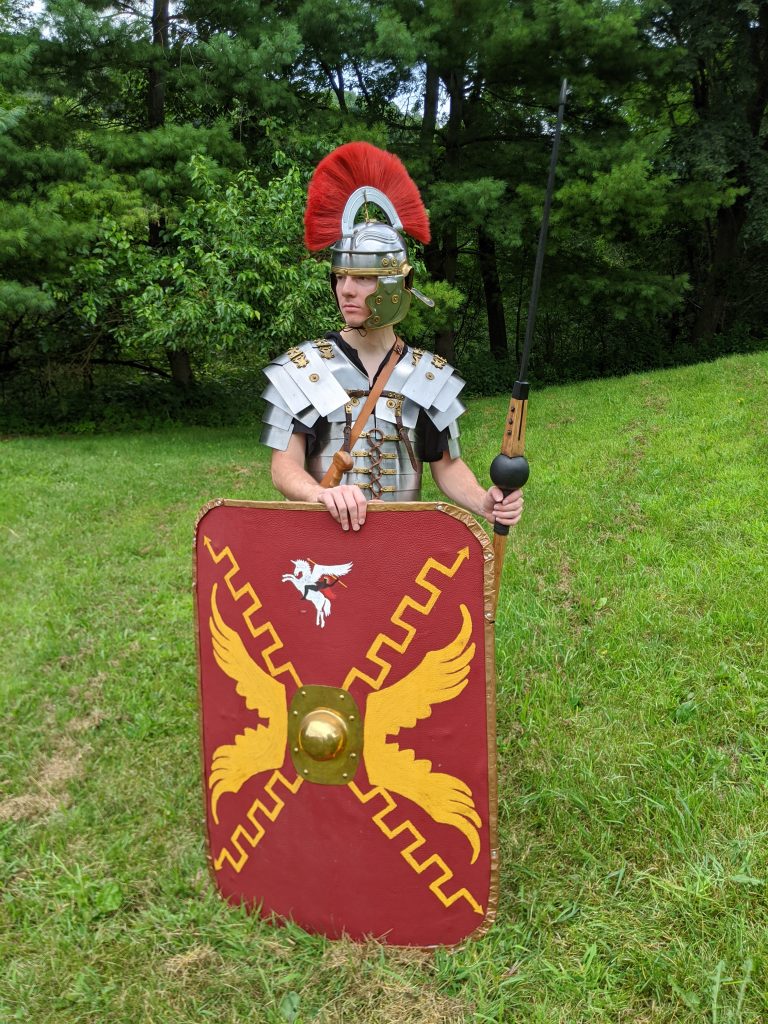I put a handful of improvements into my early imperial legionnaires kit this year: a pilum (a javelin), some nice hand-knit socks a friend made for me, and a stab at some camping gear with a furca (a thing somewhere between a hiking pole and a backpack) in which of I have put a water bag, flint and striker, spare straps, and so on. I also put in the usual work of cleaning and waxing the arms and armor to keep it in a usable, rust free condition. At this point, I have everything I need to stand around on the streets of an ancient Roman city, doing guard duty and impressing the locals, although looking I’m sure like a complete fool to any centurion who walked by.
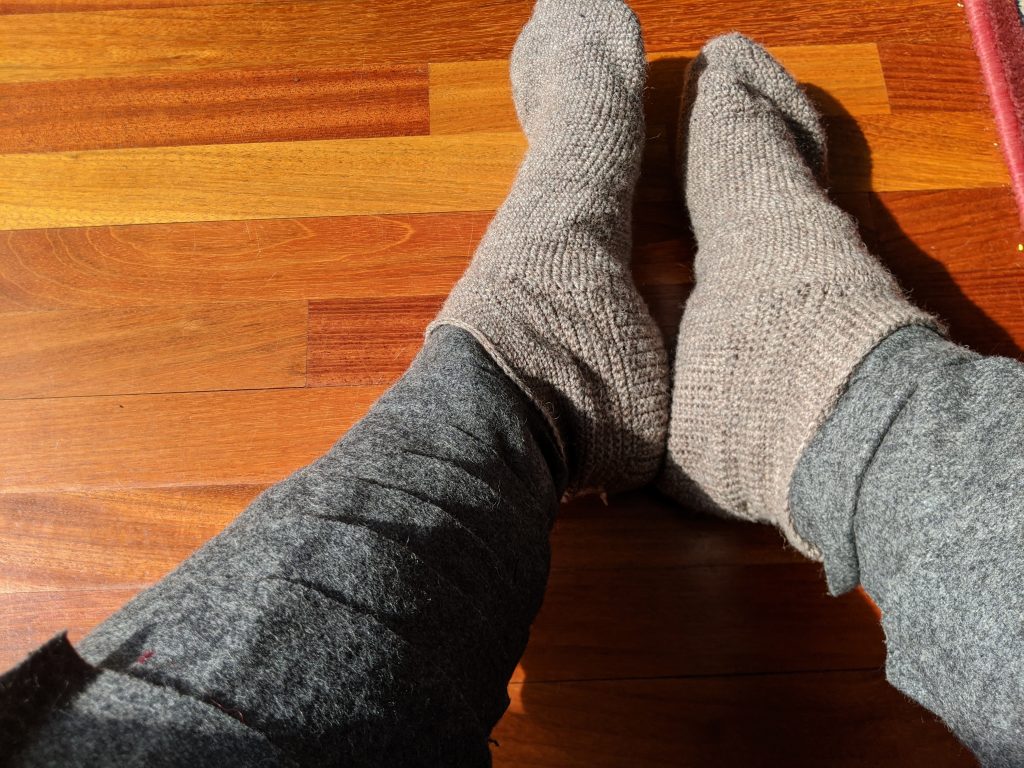
Of course, what I actually have is technology that is at least a thousand years or two obsolete. The inevitable question is: why? Roman reenacting is glorified cosplay. It is far more expensive on average. Definitely more difficult, as it is based on research much more than just imagination. It’s also something almost no one this side of the Atlantic really does. So really, why?
Well, for one thing, the armor is really effective. You can stab at it all day long and all you’d get is a dull knife. First and most important lesson about movies: they always make armor look like tissue paper, when it is in fact steel, in this case, thick enough to have been placed on early tanks. My chainmail is even better in most ways, offering better coverage and protection from everything but blunt-force trauma, but this plate armor, lorica segmenta, is easier to put on. The end point of all that is to say this outfit would be quite useful as actual riot control gear – not something you can say about most cosplay outfits.
Besides being on hand for the occasional riot, or perhaps the apocalypse, what else is the value of this? Most generally because it is a focus for thinking about the past in the way an ancient person would have actually thought about it.
Take for example the mind-bending fact that ancient people didn’t have backpacks, or indeed any particularly large form of luggage or satchel. In fact, the rolling bag with collapsible handle only dates to 1992. I would have originally imagined a legionnaire carrying a massive pack like a soldier or hiker today would often. Nope, a legionnaire carried a few odds and ends in a sack, a large cloak, and of course, all the arms and armor. This was quite heavy, but it didn’t actually have too many discrete pieces. For a forced march, a soldier would sometimes carry more food, but in general sustenance, tools, and in peaceful areas even most of the arms and armor was carried either in carts or in bags thrown over pack animals.
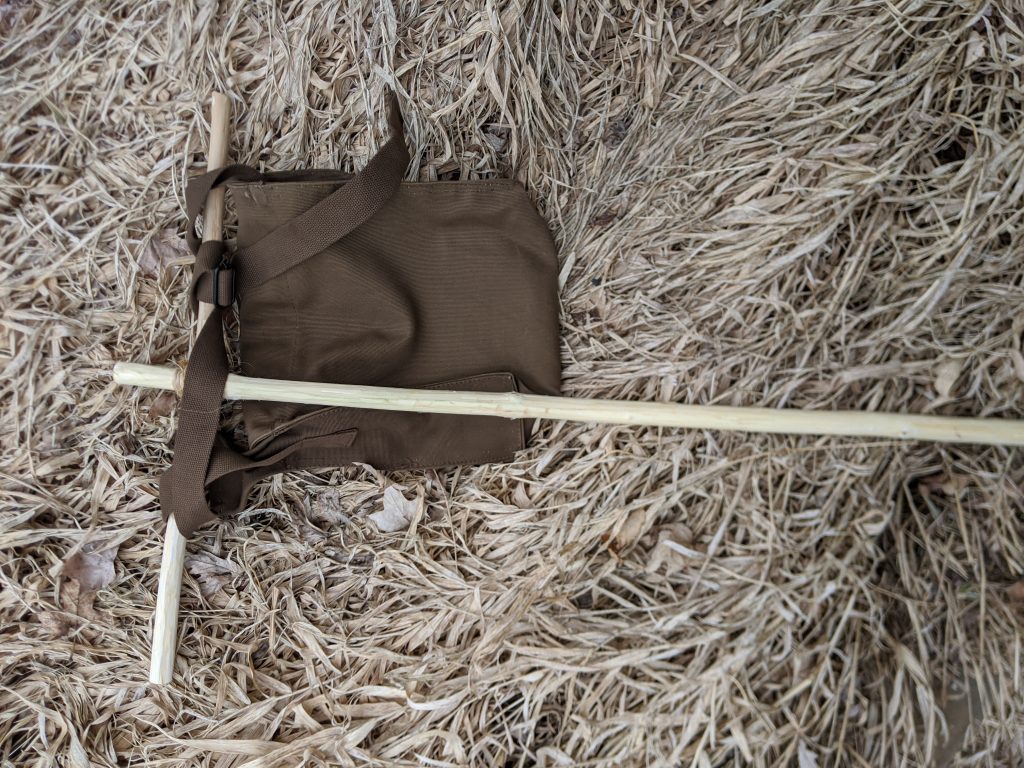
This is a simple fact, the lack of easy-to-carry baggage, but it entirely changes how one understands the movement of people throughout the ancient world – or rather not moved, as a lack of packs likely made it near impossible for poor families to move any distance. It was also something to which I was completely obvious, until I started reenacting, when it became blindingly obvious that my options for carrying things was actually quite limited. I doubt a backpack would have saved Caesar from assassination, but it, and a thousand other details, made daily life in the past almost unrecognizable. Certainly eating, sleeping, socializing – most of the things done back then are the same as today, yes, but how they are done is so drastically different. What was taken for granted by the people of the past is very different for what we take for granted today.
Taken together, all the little things of daily life that you don’t understand about the past, make all the difference in the world. For many people, they may realize this in religion – your interpretation of holy texts will drastically change the more deeply you understand what they actually meant in context, not just what they mean right now, to your ears. Imagine trying to model your life on 100 most best Twitter tweets without access to any other internet content, and without any understanding of the contemporary pop culture – this is religion. There is some great wisdom captured in there, but it is impossible to grasp if you didn’t understand any of the memes.
So yes, my reenacting is all about understanding the memes of the late first century AD.
Reenacting, more generally, is valuable in helping see through perspectives drastically different than one’s own. In the modern era, that is exactly the sort of skill our society desires more of. Thus, reenacting is the solution to all of society’s problems! Well, we can hope. Reenacting also helps encourage innovation, reexamining our current approaches from completely different angles is exactly how insights are often gained. Reenactment benefits from focusing on the simple sensual level as well – things we can see and touch, which is quite different from the computer and theory focused thinking of the modern world. At the end of the day, it is fun, but a kind of fun which has the potential to teach quite a lot.
